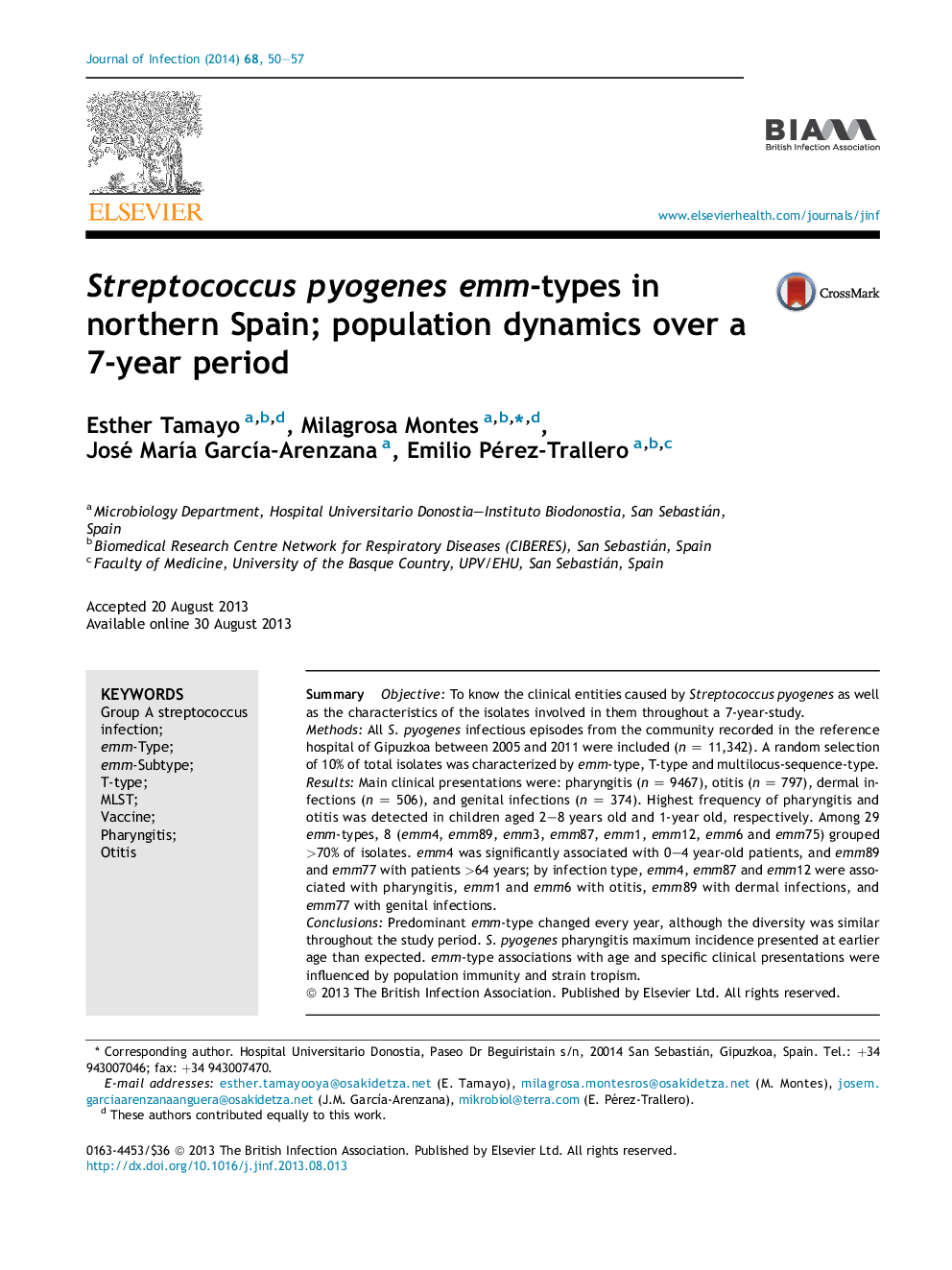| Article ID | Journal | Published Year | Pages | File Type |
|---|---|---|---|---|
| 3374514 | Journal of Infection | 2014 | 8 Pages |
SummaryObjectiveTo know the clinical entities caused by Streptococcus pyogenes as well as the characteristics of the isolates involved in them throughout a 7-year-study.MethodsAll S. pyogenes infectious episodes from the community recorded in the reference hospital of Gipuzkoa between 2005 and 2011 were included (n = 11,342). A random selection of 10% of total isolates was characterized by emm-type, T-type and multilocus-sequence-type.ResultsMain clinical presentations were: pharyngitis (n = 9467), otitis (n = 797), dermal infections (n = 506), and genital infections (n = 374). Highest frequency of pharyngitis and otitis was detected in children aged 2–8 years old and 1-year old, respectively. Among 29 emm-types, 8 (emm4, emm89, emm3, emm87, emm1, emm12, emm6 and emm75) grouped >70% of isolates. emm4 was significantly associated with 0–4 year-old patients, and emm89 and emm77 with patients >64 years; by infection type, emm4, emm87 and emm12 were associated with pharyngitis, emm1 and emm6 with otitis, emm89 with dermal infections, and emm77 with genital infections.ConclusionsPredominant emm-type changed every year, although the diversity was similar throughout the study period. S. pyogenes pharyngitis maximum incidence presented at earlier age than expected. emm-type associations with age and specific clinical presentations were influenced by population immunity and strain tropism.
